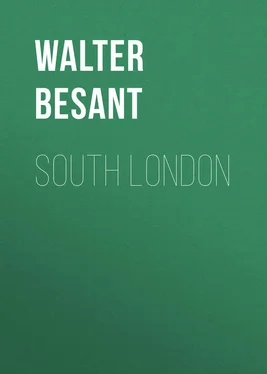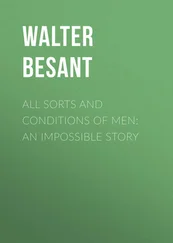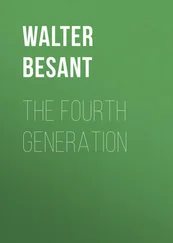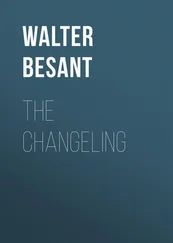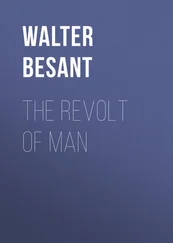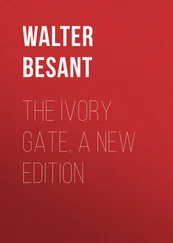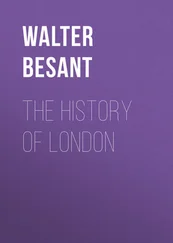Walter Besant - South London
Здесь есть возможность читать онлайн «Walter Besant - South London» — ознакомительный отрывок электронной книги совершенно бесплатно, а после прочтения отрывка купить полную версию. В некоторых случаях можно слушать аудио, скачать через торрент в формате fb2 и присутствует краткое содержание. Жанр: foreign_antique, foreign_prose, на английском языке. Описание произведения, (предисловие) а так же отзывы посетителей доступны на портале библиотеки ЛибКат.
- Название:South London
- Автор:
- Жанр:
- Год:неизвестен
- ISBN:нет данных
- Рейтинг книги:3 / 5. Голосов: 1
-
Избранное:Добавить в избранное
- Отзывы:
-
Ваша оценка:
- 60
- 1
- 2
- 3
- 4
- 5
South London: краткое содержание, описание и аннотация
Предлагаем к чтению аннотацию, описание, краткое содержание или предисловие (зависит от того, что написал сам автор книги «South London»). Если вы не нашли необходимую информацию о книге — напишите в комментариях, мы постараемся отыскать её.
South London — читать онлайн ознакомительный отрывок
Ниже представлен текст книги, разбитый по страницам. Система сохранения места последней прочитанной страницы, позволяет с удобством читать онлайн бесплатно книгу «South London», без необходимости каждый раз заново искать на чём Вы остановились. Поставьте закладку, и сможете в любой момент перейти на страницу, на которой закончили чтение.
Интервал:
Закладка:
Before long there falls the silence of death upon the walled City and the Bridge and the settlements of the South. All alike are deserted: the tide idly laps the piles of the rotting Bridge; it rolls along the empty wharves, bearing no keel upon its bosom; there is no boat on the river, there is no smoke from any house; there is no life, no sign of life, in the place which had formerly been so crowded and so busy. The timbered face of the embankment gave way and crumbled into the river; the Causeway was eaten by the tides here and there; the low grounds once more became a marsh, and the wild birds returned, undisturbed, to their former haunts.
I have elsewhere ('London,' ch. i.) described the natural reasons which led to this desertion of the City. It appears to us strange and almost impossible that a great city should be so utterly deserted. Where, however, are the cities of Tadmor, of Tyre, of Carthage? Where are the great cities of Asia Minor? The conqueror not only took the City and killed some of the people; he cut off the supplies, and therefore forced them to go. This was most certainly the case with London. Roger of Wendover, it is true, tells us that in the year 462 the Saxons took possession of London, and then successively of York, Lincoln, and Winchester, committing great devastation. 'They fell on the natives in every quarter, like wolves on sheep forsaken by their shepherds; the churches and all the ecclesiastical buildings they levelled with the ground; the priests they slew at the altars; the holy scriptures they burned with fire; the tombs of the holy martyrs they covered with mounds of earth; the clergy who escaped the slaughter fled with the relics of the saints to the caves and recesses of the earth, to the woods and deserts and the crags of the mountains.'
I do not suppose that Roger of Wendover (he died in 1237) had access to documents of the time. I would rather incline to the belief that, given certain undoubted facts of battle, murder, and sacrilege, he presented the world with a little embroidery of his own. An Assault on London is, however, possible; in which case the desertion of the City would be only hastened. With the ruin and desolation of Augusta came also the ruin of the southern settlement.
This silence – this desolation – lasted some hundred years. Then the men of Essex – the East Saxons – came down, a few at a time, and took possession of the deserted City; the merchants began timidly to bring their ships again with goods for trade; the East Saxons learned the meaning of bargains; Augusta was dead, but London revived. The City preserved its ancient name, but the southern settlement lost its name. We know not what the Romans or the Britons called it, but the Saxons called it Southwark. And they repaired the embankment and restored the ancient causeways, and cleared away the ruins.
Another point of difference: in London the new streets, laid out without rule or order, grew by degrees; they did not follow the old Roman streets, which were quite obliterated and utterly forgotten – one cannot imagine a more decisive proof of complete desertion and ruin. In Southwark, on the other hand, the streets remained the same – they were the two causeways and the embankment – because none others were then possible. High Street, Borough, is still, as it always has been, the ancient causeway connecting the new port of London with the Dover road.
Between the years 600 and 1000 Southwark suffered the vicissitudes which must happen in a period of continual warfare to an undefended suburb. In times of peace, when trade was possible, the place was what the Icelander Snorro Thirlesen calls an 'emporium.' All the merchandise carried to London from the south for export lay there waiting to be carried across the quays: the merchants themselves found accommodation there. But we cannot believe that when the Danish fleets brought their fierce warriors to the very walls of London, Southwark – or any other settlement – would continue to exist unfortified. That the place remained without a wall, except for certain temporary walls put up by the Danes, proves that it was regarded by itself as of small importance. This is also proved by another fact – namely, that the place was always occupied without defence. When, for instance, the Danes held London for twelve years, leaving it a wreck and a ruin, can we believe that any people remained in Southwark? In times of peace the fishermen lived here for greater convenience of their work; London by this time was impossible for them, because it was walled all along the river side. If peace was prolonged, inns were set up for the merchants: people built houses along the causeway. When war began again, and the enemy once more appeared, Southwark was again abandoned. This is the history of South London for a thousand years – alternate occupation and abandonment.
There exists a very singular heresy concerning Southwark. I would deal with it tenderly, because one, if not more, of the heretics is a personal friend of my own. It is that the site of the first or original London was on the South; that Roman London stood on the site of Southwark; and that, at some time or other, there was a transference of sites, the whole of Roman London migrating to the other side. It is even maintained that the name of Walworth proves that there was once a wall round the city of the south. To me the name of Walworth indicates the proximity of the high causeway running through its midst. The consideration of the site – the marshy, wet, and unwholesome site – is quite sufficient for me. At no time, not even in the time of the Lake dwellers, have marshes been selected by choice for the building of cities. Before the Embankment and the Causeway, the South of London was impossible for the residence of man.
The transference of sites is a theory often called in to account for, and make possible, other theories. Thus, the late James Fergusson invented the transference of sites in order to bolster up certain theories of his own on the Holy Places of Jerusalem. Here, however, there is no theory: only a statement by a geographer evidently ignorant of the boundaries of an obscure province of a district in a distant country which he had never seen. London, Ptolemy said, was in Kent. All the Roman remains, as we have seen, are found by the Causeway and the Embankment – there never could have been any wall; and, indeed, the only answer that is required to such a theory is to point to the natural conditions of the site. Is it conceivable that people would settle themselves in a marsh when they had firm and dry ground across the river?
CHAPTER II
EARLY HISTORY
Southwark, then, had no reason for existence at all except for its connection with London by bridge and ferry, and especially by bridge. Before the Ferry and the Bridge there was no Southwark. The history of Southwark is closely connected with the Bridge. It was on the south end of the Bridge that all the fighting took place, London very generously handing over her battles to her daughter of the south. I propose, in this chapter, to discourse about the Bridge and one or two of its earlier battles.
It is sometimes stated, confidently, that before the Bridge there was the Ferry. Why? To carry people across the river and 'dump' them down in the marsh? But people had no business in the marsh. First came the Bridge and the Causeway to connect it with the Dover road. Then traffic began to cross the Bridge and to meet the Dover road. But as yet there was no ferry. Then came the Embankment, and the appearance of houses along the Causeway and on the Embankment. As the trade of London increased, so Southwark – I would we had the Roman name – increased in proportion. Inns were created for the convenience of merchants, trade was drawn from Thorney on the south by the Bridge, just as it was diverted on the north by the military way connecting the great high road with London. When the Causeway was always filled with caravans and long trains of heavily laden packhorses; when the inns were crowded with merchants and their slaves; when the Bridge was all day covered with passengers and carriers; then the Ferry was demanded as a quicker and an easier way of getting across. Two Ferries, there were; perhaps more. One of these ran from Dowgate Dock to St. Mary Overies; the other crossed the river lower down, nearer the Tower. So things remained for nearly two thousand years – say, from A.D. 100 to A.D. 1750. If a man wanted to get across the river, he did not make his way to London Bridge, and painfully walk across amid the carriers and the caravans, the plunging horses and the droves of oxen; he stepped into the boat and was ferried across. We must not look on the Bridge as a means of getting across the river for the people: it was not; it was the means of conveying merchandise to and fro; it was a construction most important for military purposes; it was a barrier to prevent a hostile fleet from getting higher up the river; but, for the ordinary passenger, the boat was the quicker and the easier means of conveyance.
Читать дальшеИнтервал:
Закладка:
Похожие книги на «South London»
Представляем Вашему вниманию похожие книги на «South London» списком для выбора. Мы отобрали схожую по названию и смыслу литературу в надежде предоставить читателям больше вариантов отыскать новые, интересные, ещё непрочитанные произведения.
Обсуждение, отзывы о книге «South London» и просто собственные мнения читателей. Оставьте ваши комментарии, напишите, что Вы думаете о произведении, его смысле или главных героях. Укажите что конкретно понравилось, а что нет, и почему Вы так считаете.
